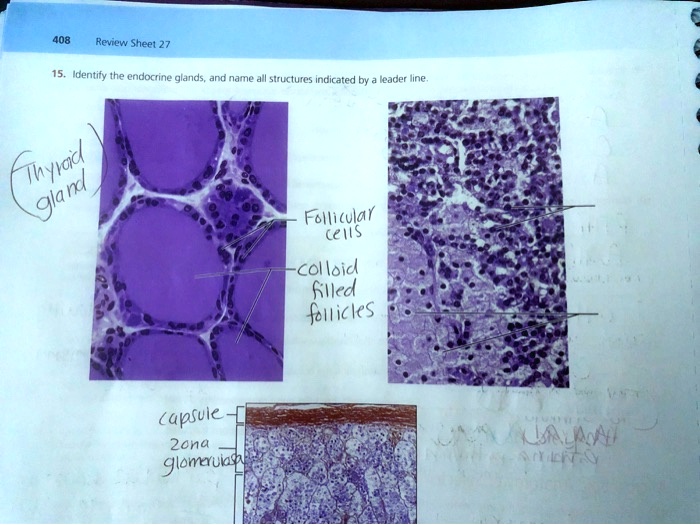Review sheet functional anatomy of the endocrine glands – Embark on a journey through the intricate world of the endocrine system with this comprehensive review sheet on the functional anatomy of the endocrine glands. Delve into the depths of this fascinating topic and unravel the secrets of these essential organs.
This meticulously crafted guide provides an in-depth exploration of the structure, location, and functions of each endocrine gland. From the pituitary gland, the master regulator of the endocrine system, to the adrenal glands, responsible for the body’s stress response, this review sheet offers a comprehensive understanding of the endocrine system’s role in maintaining homeostasis and overall well-being.
Endocrine Gland Overview: Review Sheet Functional Anatomy Of The Endocrine Glands

The endocrine system is a network of glands that produce and secrete hormones directly into the bloodstream. These hormones act as chemical messengers, regulating various physiological processes in the body, including metabolism, growth, reproduction, and mood.
Endocrine glands are ductless, meaning they do not have ducts to release their secretions. Instead, hormones are released directly into the bloodstream, where they travel throughout the body and target specific cells or organs.
Pituitary Gland
The pituitary gland, located at the base of the brain, is often referred to as the “master gland” of the endocrine system. It produces hormones that regulate other endocrine glands, as well as hormones that directly affect growth, metabolism, and reproduction.
- Growth hormone (GH):Promotes growth and development in children and adolescents.
- Prolactin (PRL):Stimulates milk production in women after childbirth.
- Adrenocorticotropic hormone (ACTH):Regulates the adrenal glands and their production of cortisol.
- Thyroid-stimulating hormone (TSH):Stimulates the thyroid gland to produce thyroid hormones.
- Follicle-stimulating hormone (FSH):Regulates the development and function of the ovaries in women and testes in men.
- Luteinizing hormone (LH):Triggers ovulation in women and testosterone production in men.
Thyroid Gland
The thyroid gland, located in the neck, produces hormones that regulate metabolism. It plays a crucial role in energy production, growth, and development.
- Thyroxine (T4):Regulates metabolism, growth, and development.
- Triiodothyronine (T3):More potent than T4, also regulates metabolism, growth, and development.
- Calcitonin:Regulates calcium levels in the blood.
Parathyroid Glands, Review sheet functional anatomy of the endocrine glands
The parathyroid glands, located in the neck, produce hormones that regulate calcium levels in the blood.
- Parathyroid hormone (PTH):Increases blood calcium levels by stimulating the release of calcium from bones and promoting its absorption from the intestines.
FAQ Corner
What is the endocrine system?
The endocrine system is a network of glands that produce and secrete hormones directly into the bloodstream. These hormones regulate a wide range of bodily functions, including metabolism, growth, reproduction, and mood.
What are the main endocrine glands?
The main endocrine glands include the pituitary gland, thyroid gland, parathyroid glands, adrenal glands, pancreas, gonads (testes and ovaries), pineal gland, and thymus.
How do hormones work?
Hormones travel through the bloodstream and bind to specific receptors on target cells. This binding triggers a cascade of events within the cell, ultimately leading to a specific physiological response.

